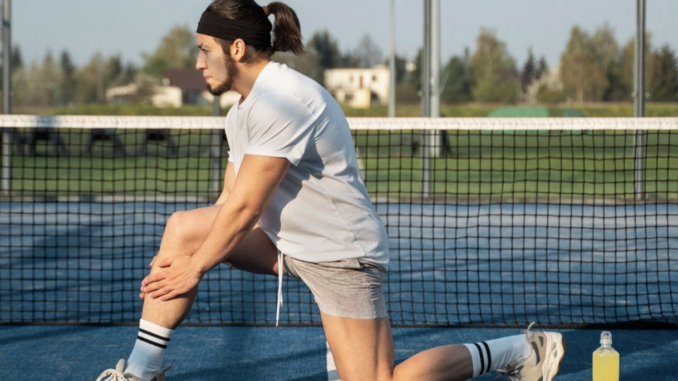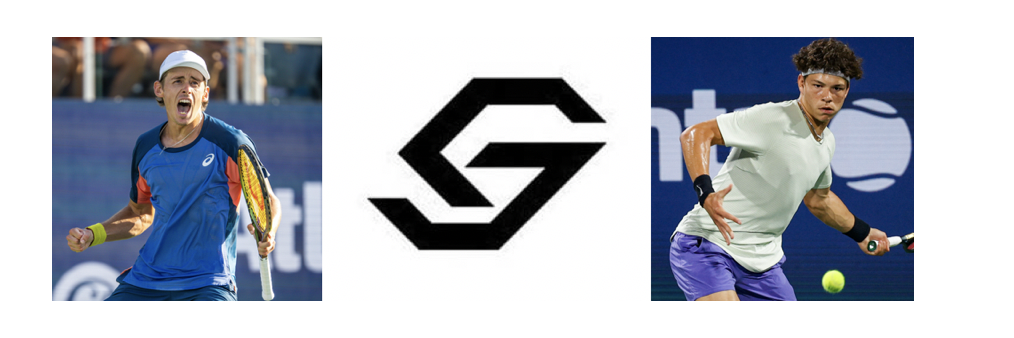
Professional tennis looks glam. Packed courts, big brands, and huge prize money catch the eye. Yet, underneath them lies the harsh monetary truth. Tennis pros pay their own way, unlike team players. They foot bills for trips, hotels, coaches, and gear. These expenses can reach six-figure sums per year. Many players, even those in the top 100, don’t earn enough to cover these expenses.
In our article, we will examine their stories and money problems, break down the costs of equipment and travel, and share our tips for aspiring players on how to handle money in this expensive sport.
Money Problems from Top Players
Like any athlete, tennis players are often on the road. Beginners and sports enthusiasts often favor no fax payday loans, as they do not require extra paperwork and can be obtained online. These types of loans are often easy to get within one business day.
Yet, you have to be careful. Choose only trusted lenders and be realistic about your repayment capability. Some famous athletes have mismanaged their finances. Poor decisions, careless spending, or unexpected injuries have led many into debt.
Below, we’ll share their stories of financial struggles:
Frances Tiafoe
Frances Tiafoe grew up in tough financial conditions. His father worked as a janitor at a tennis center, where Tiafoe and his brother often slept on the floor. He practiced with broken rackets and hustled for court time. His financial situation only improved after he turned pro, but like many lower-ranked players, he faced steep costs for travel and coaching early in his career.
Denis Shapovalov
Denis Shapovalov has expressed frustration with shrinking prize money at smaller tournaments, which often barely cover expenses like travel and coaching. He said many players, including himself, feel compelled to play due to sponsor obligations, not financial gain. Without these sponsors, many would likely not get to these events at all.
Daniil Medvedev
Daniil Medvedev has faced financial challenges while even being a top player. Though he’s earned over $42 million in prize money, nearly half is eaten up by taxes, travel, and team salaries. His earnings fluctuate greatly—he might make millions from a Grand Slam win but drop to below $50,000 in some months due to fixed costs.
Tomas Machac
Tomas Machac has dealt with financial difficulties despite sponsorships from Yonex and Joma. Early in his career, he had a deal with Nike, but he switched to Joma in 2023. Even with these endorsements, the costs of competing—travel, coaching, and tournaments—have significantly eaten into his over $1 million in prize money.
The Price of Being on Tour – Equipment and Kit
We researched the equipment top tennis players use, along with their average costs and some additional accessories and food. Remember, tennis gear wears out quickly, so replacing these tools is a regular expense, not a one-time purchase.
- Rackets
- Daniil Medvedev: Tecnifibre T-Fight ISO 305 – $239.99
- Alexander Zverev: Head Gravity Pro – $259.99
- Rafael Nadal: Babolat Pure Aero Rafa – $239.00
- Frances Tiafoe: Yonex VCORE 97 – $239.00
- Denis Shapovalov: Yonex VCORE 95 – $249.00
- Novak Djokovic: Head Speed Pro – $259.99
- Strings
- Babolat RPM Blast 200m – $151.99
- Luxilon ALU Power 130 – $17.95 per set / $279.95 for reel
- Wilson Natural Gut 16 – $47.95 per set
- Solinco Hyper-G 200m – $145.00
- Tennis Shoes
- ASICS Gel-Resolution 8 – $144.95
- Nike Air Zoom Vapor Pro – $120.00
- Adidas Barricade – $140.00
- New Balance Fresh Foam Lav V2 – $159.99
- Tennis Bags
- Head Tour Team 9-Pack Bag – $99.95
- Babolat Pure Aero 12-Pack Bag – $159.95
- Wilson Super Tour 9-Pack – $129.00
- Tennis Balls
- Wilson US Open Tennis Balls (case of 24 cans) – $94.99
- Dunlop ATP Championship Tennis Balls (case of 24 cans) – $89.99
- Accessories
- Wilson Pro Overgrip (30-pack) – $36.95
- Yonex Super Grap Overgrip (30-pack) – $39.95
- TOURNA Grip XL (30-pack) – $36.99
- Vibration Dampeners (Babolat Custom Damp) – $5.95
- Other Essentials
- Electrolyte Mix (Nuun Tablets) – $24.95 for 4 tubes
- Jump Rope (Ballistyx Jump Rope) – $27.00
- Resistance Bands (TheraBand Resistance Set) – $29.95
- Sports Towel (Nike Large Court Towel) – $19.99
- Compression Sleeves (Nike Pro Elite Arm Sleeve) – $20.00
- Additional Recovery and Training Tools
- Theragun Mini Massage Gun – $199.00
- Foam Roller (TriggerPoint GRID Foam Roller) – $34.99
- Nutritional Supplements & Snacks
- CLIF BAR Energy Bars (16-pack) – $20.99
- Honey Stinger Organic Energy Gels (12-pack) – $24.00
- Electrolyte Powder (Vitalyte Electrolyte Mix) – $22.99
These items are essential for players to maintain peak performance, and they add to the financial pressure of a tennis career.
The Expense of Travel and Accommodation
Tennis pros live a nomadic life. They travel constantly for matches across the globe. This lifestyle comes with a hefty price tag, hitting lower-ranked players hardest.
Top players shell out $50,000 to $150,000 yearly on travel alone. These costs soar when booking last-minute flights after early tournament exits. Lower-ranked players can’t afford luxury travel perks. They endure long waits in crowded airports, adding to their stress and fatigue.
Hotels eat up a big chunk of players’ budgets too. While Grand Slams offer free rooms for main draw contestants, most events don’t. A decent hotel can easily cost $1,000 or more per tournament. With some events lasting up to two weeks, these expenses add up fast.
It’s not just personal travel costs that weigh on players. They often foot the bill for their entire support team. This includes coaches, physiotherapists, and sometimes family members. Take Stan Wawrinka, for example. After his 2021 injury, his travel costs jumped. He needed his full team with him to stay competitive on the court.
Players ranked outside the top 100 face the hardest financial strain. Each tournament becomes a risk. Many spend more on travel and expenses than they win, especially if they lose in the early rounds. This adds pressure, affecting their play and making improving their ranking tougher.
Loans and Financial Management in Tennis
Loans or external funding help many players cover the financial demands of the tennis circuit. While top athletes may enjoy substantial earnings, those outside the top 100 often face unstable finances, so managing money wisely becomes a critical part of their career.
For new players, tournament earnings usually fall short of covering expenses. Entry fees, travel, accommodation, and training costs add up fast, forcing some to rely on loans. While loans offer quick financial help, they carry risks, especially if a player faces poor results or injury.
Grigor Dimitrov, for instance, encountered financial difficulties after injuries hurt his ranking and income. While sponsorships helped, the expenses tied to his recovery and maintaining his career increased the strain.
Stan Wawrinka has also felt financial pressure during long injury breaks. His recovery from foot surgery in 2021 brought major financial challenges, with ongoing fitness, coaching, and team travel costs — despite his inability to play.
Some players use sponsors or savings to avoid loans, but poor money management can cause bigger problems. Tennis players handle their own taxes, insurance, and retirement. Without good planning, even top players can end up in debt.
To get ahead of these issues, players should get financial advice early. A good advisor helps grow their money, invest wisely, and plan for future costs. Learn from others’ mistakes, especially when it comes to finances!
Advice for Aspiring Tennis Players
Aspiring tennis players must understand that building a successful career goes beyond talent. Here are some strategies to help young players manage expenses while working toward their professional goals:
Don’t Chase After Top-of-the-Range Equipment
Start your tennis career with budget-friendly equipment instead of spending on top-tier gear right away. Affordable rackets, shoes, and accessories will work well for early practice and competitions. As you improve, gradually invest in higher-quality gear. To save money, look for discounts, second-hand options, or even sponsorships as you gain more experience.
Budget for Travel and Tournaments
Plan your yearly tournament schedule based on your budget. Focus on local and regional events before moving on to international competitions. Travel can quickly become one of the largest expenses. Aim for tournaments that offer the best potential earnings or experience.
Search for Sponsorships and Grants
Local businesses, sports clubs, and tennis federations often offer sponsorships or grants to support rising players. Do some research — use Google to find information about your local programs. For instance, the International Tennis Federation provides grants to players from underfunded regions. College tennis scholarships in the U.S. offer players a chance to pursue education and tennis simultaneously.
Seek Private Investment
As players become more visible, they are more likely to secure sponsorships from brands like Nike or Wilson. These deals offer financial support and free gear. Moreover, adverts from popular brands can add a lot to your popularity.
Build a Support Network
Your network can provide more than advice; it can help you find financial support. Work with agents, coaches, and mentors to connect with sponsors or fundraising opportunities. Friends and family can assist with crowdfunding or organizing local events to raise funds.
Consider Part-Time Work
Many players add to their income by doing what they love. Private tennis lessons not only allow them to stay involved in sports but also help to raise the new generation of players. Social media partnerships and content creation are other great options to get some cash. Yet, doing online blogs that make money isn’t an easy job.
Get Financial Advice Early
A tennis career is unpredictable, so managing money well is a must. Hire a financial advisor early to help budget, save, and avoid debt. Planning for taxes, insurance, and retirement is also necessary for long-term stability.
Invest in Health and Longevity
Preventing injuries saves players from expensive medical bills and time off the court. Investing in fitness, conditioning, and recovery tools helps maintain a long, stable career and avoid financial strain from injuries.
State About Yourself
Platforms like GoFundMe or Kickstarter let players raise money by sharing their goals with the public. Make an announcement, talk about yourself and your goals, and maybe the public will respond!
The True Cost of a Tennis Career
A professional tennis career goes beyond skill—it demands heavy financial commitment. Travel, coaching, equipment, and recovery all add up. While top players with strong sponsorships might seem financially secure, many players struggle to break even. Loans or external financial help are often needed, but they bring risks if not managed well.
For a sustainable career, players must balance smart financial planning, strategic sponsorships, and careful funding decisions. Tennis isn’t just a sport—it’s a business that requires financial discipline off the court.


Leave a Reply